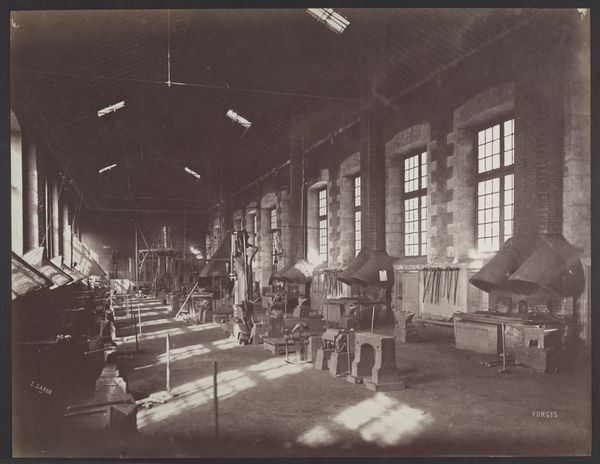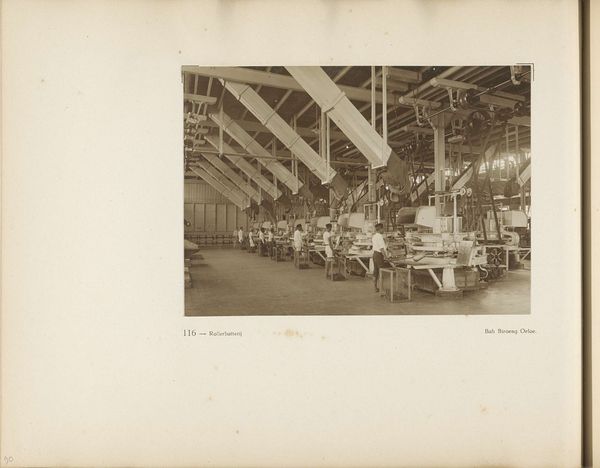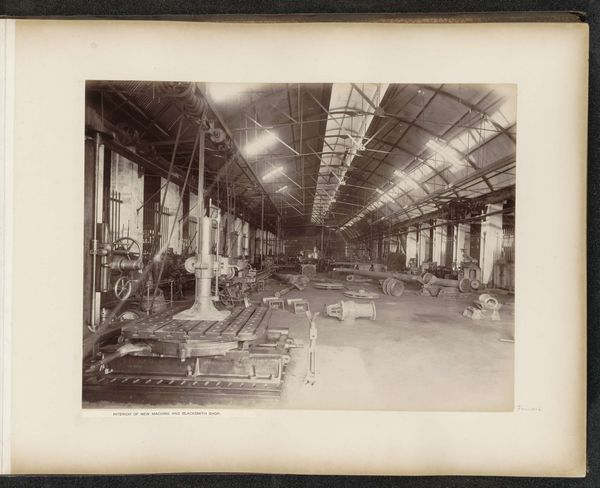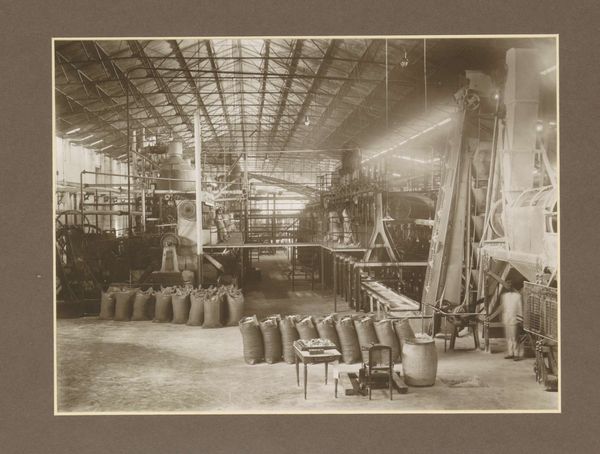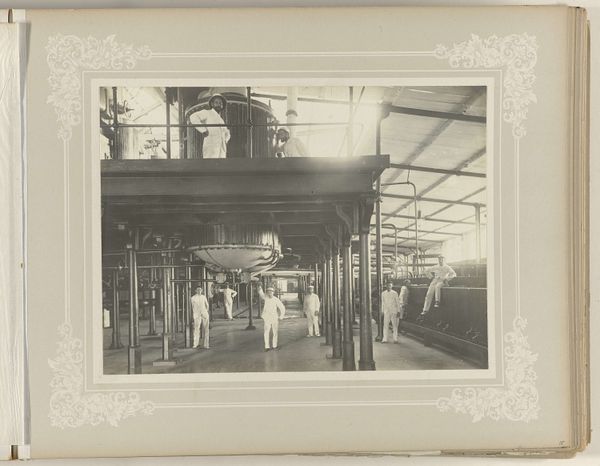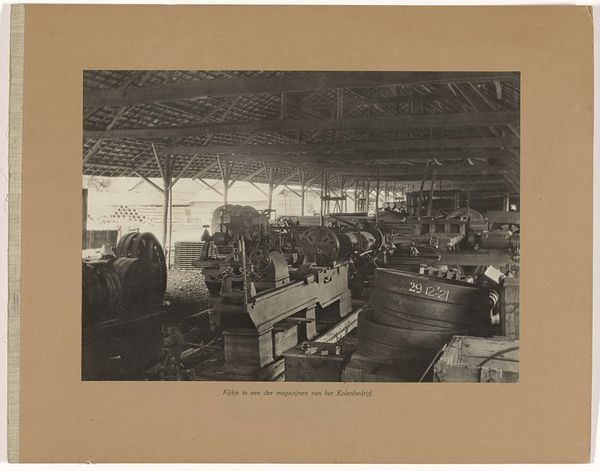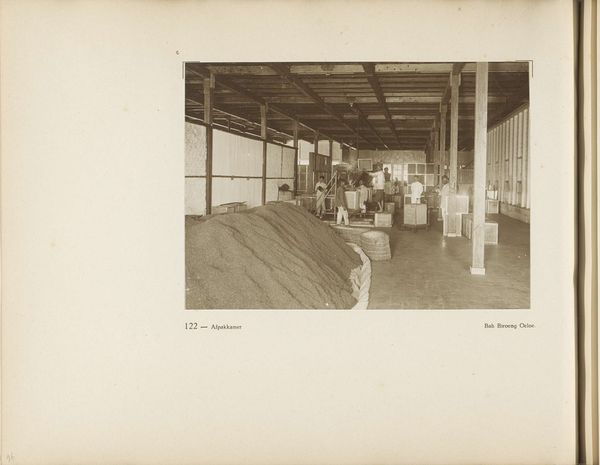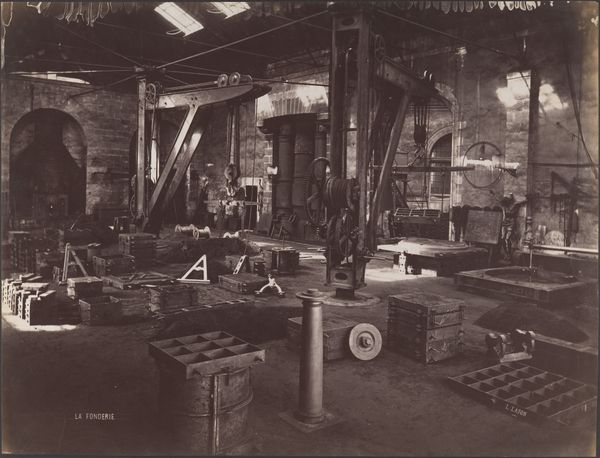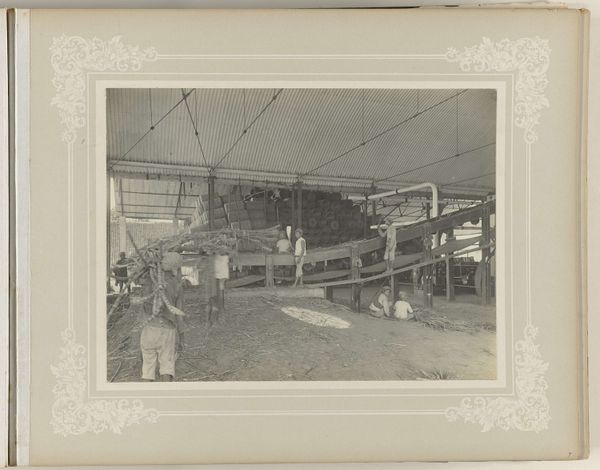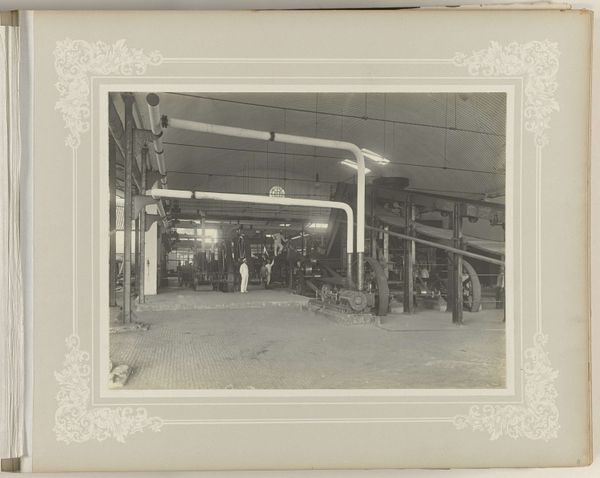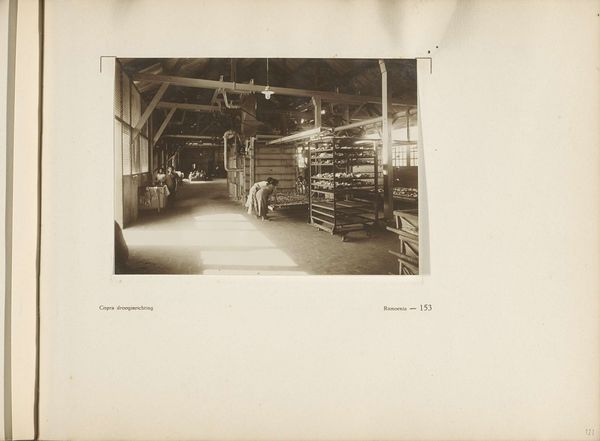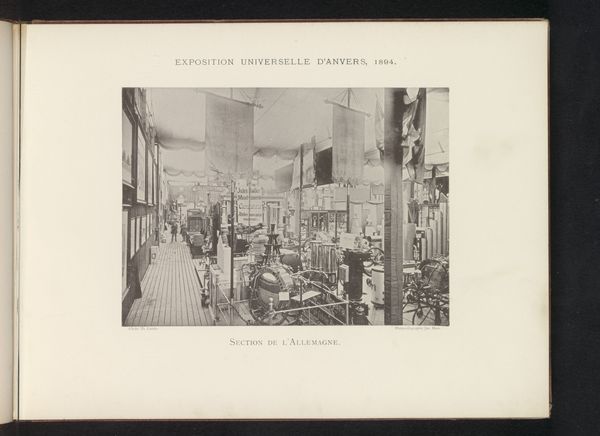
Interieur van het machinehuis met werkbanken van de Tanjong Pagar Dock Co. Ltd. in Singapore before 1905
0:00
0:00
grlambertco2
Rijksmuseum
photography, gelatin-silver-print
#
photography
#
gelatin-silver-print
#
cityscape
#
realism
Dimensions: height 266 mm, width 357 mm
Copyright: Rijks Museum: Open Domain
Editor: This gelatin-silver print, taken before 1905 by G.R. Lambert & Co., shows the interior of the machine house at Tanjong Pagar Dock in Singapore. It's astonishing how much detail they captured. What do you see when you look at this image? Curator: Immediately, the strong emphasis on linear perspective commands attention. The orthogonal lines of the architecture and machinery converge, creating a powerful illusion of depth. Consider also the tonal range; the interplay of light and shadow sculpts the forms and reveals the texture of the industrial materials. What strikes you about the composition? Editor: It feels very balanced, almost symmetrical. Is that intentional, or just a consequence of how machine shops were organized back then? Curator: Symmetry plays a crucial role. The careful arrangement of machinery on either side of the central vanishing point creates a sense of order. Yet, the realism avoids being sterile. Note the high viewpoint the photographer chose; how the beams in the building's infrastructure have similar geometry as the various worktables arrayed below them. Does this then help give context and structure to the work as a whole? Editor: It really does, and now I see how even the arrangement of tools on the worktables echoes some of these structural lines! Curator: Precisely. Every element, from the grand architectural scale down to the minute details of tools and fittings, is considered as part of a total structured design that allows insight into this important part of Singaporean manufacturing history. Editor: This has really highlighted how an image can go beyond just a visual record and achieve a carefully considered formal structure, using techniques from light and perspective to convey more subtle messages. Curator: Indeed. This formal structuring is essential in reading its place in photographic traditions of the time.
Comments
No comments
Be the first to comment and join the conversation on the ultimate creative platform.
